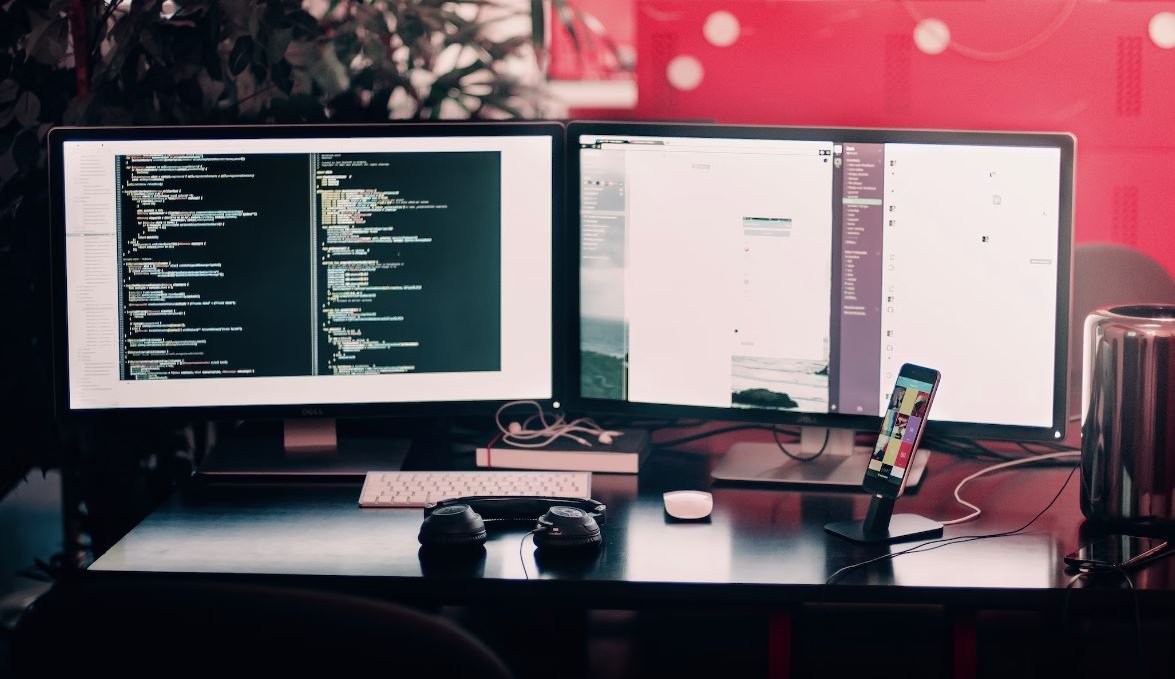How to Get AI Voices to Sing
In recent years, artificial intelligence (AI) technology has become increasingly sophisticated, enabling AI voices to sing like human vocalists. This opens up countless possibilities in the music industry, as artists can now use AI to create unique and captivating vocal performances. In this article, we will explore the methods and tools available to get AI voices to sing and provide practical tips on how to achieve impressive results.
Key Takeaways:
- AI voices can now convincingly sing like human vocalists.
- There are several methods and tools available to create AI-generated singing.
- Balance is key when mixing AI voices with human vocals.
Methods for AI Singing
There are various methods to get AI voices to sing, each with its own advantages and limitations. One popular approach is using deep neural networks to train models that can generate realistic and expressive vocal performances. These models learn from vast amounts of existing vocal data and are able to produce impressive results. Another technique involves using text-to-speech (TTS) models combined with pitch and timbre modification algorithms to transform the output into singing. Both approaches have their merits, and experimentation with different methods can yield unique and desirable outcomes.
* Using deep neural networks and text-to-speech (TTS) models are two common methods for AI singing.
Tools for AI Singing
Advancements in AI have led to the development of several tools specifically designed for AI singing. One such tool is ‘Synthesizer V’, which allows users to input lyrics and melodies and generate high-quality AI vocals. ‘Vocaloid’ is another popular software that offers a wide range of virtual singer characters with distinct voices. Additionally, ‘Auto-Tune EFX+’ provides users with pitch correction and vocal effects that can enhance and refine AI-generated singing. These tools provide artists with the necessary functionalities to bring their musical ideas to life through AI-generated vocals.
* Synthesizer V, Vocaloid, and Auto-Tune EFX+ are popular tools for AI singing.
| Tool | Features | Compatibility |
|---|---|---|
| Synthesizer V | Lyric input, pitch control, expressive AI vocals | Windows, macOS |
| Vocaloid | Virtual singers with various voicebanks, harmonizing options | Windows, macOS |
| Auto-Tune EFX+ | Pitch correction, vocal effects, real-time processing | Windows, macOS |
Using AI and Human Vocals
Combining AI voices with human vocals can create a powerful and captivating sonic experience. To achieve a balanced mix, it is essential to find the right blend between the two. One method is to use AI-generated vocals as backing or harmony vocals while keeping the main lead vocals performed by a human. This approach can add depth and richness to the overall sound. Alternatively, artists can experiment with blending AI and human vocals in creative ways, such as using AI to harmonize or add subtle vocal layers. The possibilities are endless, and with careful experimentation, artists can produce truly unique and compelling musical performances.
* Combining AI and human vocals can result in a dynamic and immersive listening experience.
| AI Vocals | Human Vocals | |
|---|---|---|
| Pros |
|
|
| Cons |
|
|
Tips for Achieving Impressive Results
- Experiment with different AI singing methods to find the one that suits your artistic vision the best.
- Use a mix of AI and human vocals to create a balanced and engaging musical experience.
- Adjust the AI-generated vocals to match the style and emotion of the song.
- Explore the capabilities of AI singing tools by utilizing various effects and techniques.
- Continuously refine and tweak the AI vocals to achieve the desired outcome.
| Industry | Applications |
|---|---|
| Music Production |
|
| Entertainment |
|
| Advertising |
|
Unlocking the Power of AI Singing
With the advancements in AI technology, getting AI voices to sing like human vocalists has become a reality. By utilizing methods such as deep neural networks and text-to-speech models, combined with powerful AI singing tools, artists can unlock a new world of creative possibilities. By blending AI and human vocals in a thoughtful and balanced way, musicians can create captivating musical performances that push the boundaries of traditional vocal expression. So go ahead, experiment with AI voices, and embrace the untapped potential of AI in the realm of singing.

Common Misconceptions
Misconception 1: AI voices cannot produce realistic singing
Many people believe that AI voices are limited to speech synthesis and are unable to generate convincing singing voices. This misconception stems from early developments in AI voice technology that lacked the necessary sophistication. However, with recent advancements, AI voices can now be trained on extensive music datasets, allowing them to mimic a wide range of singing styles and deliver highly realistic vocal performances.
- Innovative AI models can achieve remarkable levels of realism in singing.
- Advanced music training datasets enable AI voices to capture nuances of human singing.
- AI voices now possess the ability to emulate specific singers or vocal styles successfully.
Misconception 2: AI voices lack emotional expression in singing
Another misconception is that AI voices are incapable of expressing genuine emotion when singing. However, contemporary AI technologies have made significant progress in incorporating emotional expression into AI-generated vocals. By utilizing deep learning models and capturing the dynamics and tonal variations found in human singing, AI voices can now effectively convey a range of emotions, including joy, sadness, excitement, and more.
- Modern AI algorithms can simulate emotional nuances in singing performances.
- AI voices can accurately deliver emotional expression through changes in pitch, tone, and phrasing.
- The ability to generate emotional singing is continually improving and evolving.
Misconception 3: AI voices cannot match the versatility of human performers
A prevalent misconception is that AI voices cannot match the versatility and adaptability of human singers. While it is true that AI-generated singing voices rely on pre-existing training data to mimic specific styles, AI technology is constantly evolving and advancing. With sophisticated machine learning techniques, AI voices can adapt to different musical genres, learn new singing styles, and even create unique vocal expressions that go beyond traditional human capabilities.
- AI algorithms can be trained to adapt to various music genres and styles.
- Continuous learning allows AI voices to improve versatility and expand their singing capabilities.
- Innovative AI models introduce novel vocal expressions that transcend human limitations.
Misconception 4: AI voices will replace human singers
Many people fear that AI voices will entirely replace human singers, making musicians obsolete. However, AI-generated singing voices are not intended to replace humans but rather to complement and enhance musical creativity. AI technologies can be valuable tools for songwriters, composers, and producers, offering endless possibilities for experimentation, inspiration, and collaboration in the music industry.
- AI voices contribute to the creative process of songwriting and music composition.
- Collaboration between AI and human musicians can lead to unique and innovative musical productions.
- The integration of AI voices empowers artists to explore new creative avenues in their work.
Misconception 5: AI voices render human performers irrelevant
Some people mistakenly believe that AI voices render human performers irrelevant and diminish the significance of live performances. While AI-generated vocals offer new possibilities and avenues for music production, the allure and connection created through live performances will always remain essential in the music industry. AI serves as a tool to complement and enhance human talent, contributing to the overall richness and diversity of musical performances.
- AI voices can enhance live performances by adding unique layers of sound and effects.
- The emotional connection and interaction with human performers cannot be replicated by AI alone.
- Human singers offer a dynamic and improvisational element to live performances that is distinct from AI-generated vocals.

The Rise of AI Singers
The field of artificial intelligence has made tremendous advancements in recent years, transcending various domains. One area where AI has found remarkable success is in the realm of music. AI voices are now being trained to sing, emulating various vocal styles and genres. This table highlights some intriguing facts about the rise of AI singers.
The Evolution of AI Singing Technologies
As technology continues to progress, so too does the capability of AI voices to sing. This table explores the evolution of AI singing technologies, from early attempts to the cutting-edge methods employed today.
AI Singing Applications in Various Industries
AI singing has found applications across a multitude of industries, revolutionizing the way we create music and consume entertainment. This table delves into some captivating examples of AI singing applications in different sectors.
The Challenges in AI Singing Development
Despite notable achievements, there are still challenges to overcome in the development of AI singing. This table highlights some of the hurdles researchers and developers face on their quest to create truly authentic AI voices.
AI Singers vs. Human Singers: A Comparison
AI singers have gained significant attention in recent years, pitting them against their human counterparts. This table provides an intriguing comparison between AI singers and human singers, shedding light on their respective strengths and weaknesses.
The Most Popular AI Singing Projects
Several AI singing projects have captivated audiences and gained immense popularity. This table explores some of the most well-known and influential AI singing projects that have taken the world by storm.
AI Singing in the Music Industry: Impact and Controversy
AI singing has caused ripples within the music industry, both in terms of its impact and the controversies it has sparked. This table delves into the implications and debates surrounding AI singing in the music business.
The Future of AI Singing
What lies ahead for AI singers? This table provides a glimpse into the future of AI singing, discussing potential advancements and the possibilities that await us as this technology continues to evolve.
AI Singing and Creativity: Collaborations and Innovations
AI singing has not only enhanced individual creativity but has fostered unprecedented collaborations and innovations. This table showcases some exciting examples of AI-human collaborations and revolutionary creative endeavors.
The Ethical Concerns of AI Singing
As AI singing becomes more sophisticated, ethical concerns arise regarding its usage and impact. This table addresses some of the key ethical considerations associated with AI singing and its implications on society.
The rise of AI voices in the realm of singing has ushered in a new era of music creation. From the evolution of AI singing technologies to its impacts on various industries and the controversies it has generated, AI singing is redefining the boundaries of creativity and raising important ethical questions. As this technology continues to push boundaries, we can expect even more exciting collaborations, innovations, and challenges to emerge. Whether AI singers will fully replace human singers or coexist, the melody of the future will undoubtedly feature the harmonious blend of human creativity and artificial intelligence.
Frequently Asked Questions
How can I achieve AI voices to sing?
To enable AI voices to sing, you can utilize text-to-speech (TTS) synthesis techniques combined with deep learning models. By training AI models with musical data and lyrics, you can generate realistic singing voices. This involves text preprocessing, training on suitable datasets, and applying techniques such as mel-spectrogram generation or waveform synthesis.
What are some popular tools or platforms that help achieve AI voices singing?
There are various tools and platforms available to achieve AI voices singing. Some popular options include Tacotron, DeepVoice, WaveNet, and OpenAI’s MuseNet. These tools offer different functionalities, architectures, and training methodologies to generate high-quality AI singing voices.
Can I train AI voices to sing in different music genres?
Yes, it is possible to train AI voices to sing in different music genres. By providing diverse musical datasets during the training process, AI models can learn and imitate the style, intonation, and characteristics of various genres, such as pop, rock, jazz, or classical.
How accurate are AI singing voices compared to human singers?
The accuracy of AI singing voices in replicating human singing varies based on the complexity of the model and the quality of training data. While AI singing voices have made significant advancements, they may not fully capture the nuanced expressiveness and emotional depth of human singers. However, with continued research and development, AI voices are becoming increasingly indistinguishable from human singers.
What are the limitations of AI singing voices?
AI singing voices still have some limitations. They may lack the emotional nuances and improvisation abilities of human singers. Additionally, AI models may struggle with certain vocal techniques, such as vibrato or vocal fry. Limited availability of high-quality training data and computational resources can also impact the quality and realism of AI singing voices.
Can AI singing voices be used for commercial purposes?
Yes, AI singing voices can be used for commercial purposes. However, it is important to ensure that you have the necessary rights and permissions to use the AI voices and any associated copyrighted material in your commercial endeavors. Always consult with legal experts to confirm compliance with intellectual property laws.
What are some potential applications of AI singing voices?
AI singing voices have a wide range of potential applications. They can be used in music production for generating backing vocals, demo tracks, or instrumental arrangements. AI voices can also be employed in entertainment and gaming industries to create virtual characters, or in assistive technologies for speech rehabilitation, audiobook narration, and more.
What are the computational requirements for training AI singing voices?
The computational requirements for training AI singing voices can vary depending on the complexity of the model and the size of the training dataset. Training AI voices often requires high-performance GPUs and substantial memory resources. The training time can also be significantly influenced by the available computational power and the size of the dataset.
Are there any online resources or tutorials available for AI singing voice synthesis?
Yes, there are online resources and tutorials available for AI singing voice synthesis. Some websites, forums, and academic resources provide guides, research papers, and open-source implementations of AI singing voice synthesis techniques. These resources can help you understand the underlying concepts and provide practical insights for training your own AI singing voices.
Is there a future for AI in singing and music production?
Definitely! AI has already made significant advancements in singing and music production, and it continues to evolve. As researchers and developers improve the algorithms, training methodologies, and access to high-quality datasets, AI singing voices will become increasingly realistic and versatile. The future holds great potential for AI to enhance and revolutionize the creation and enjoyment of music.




